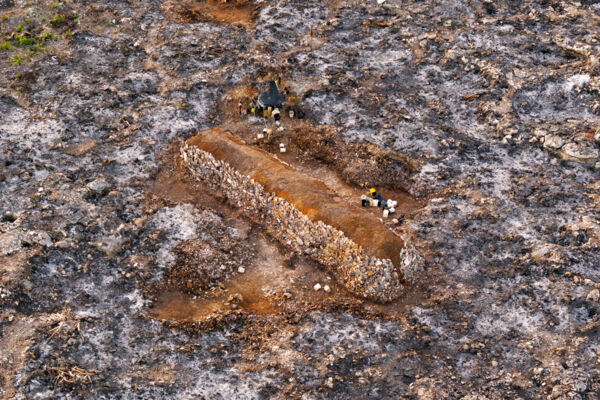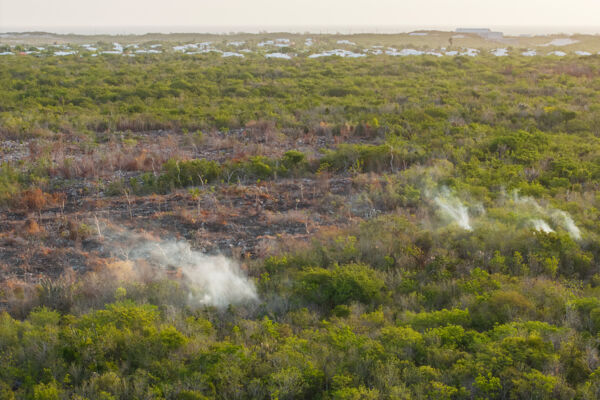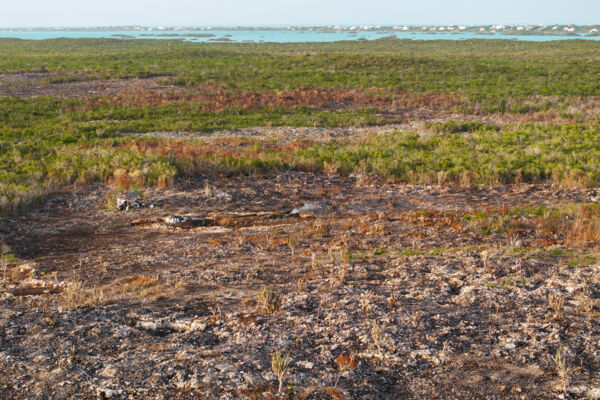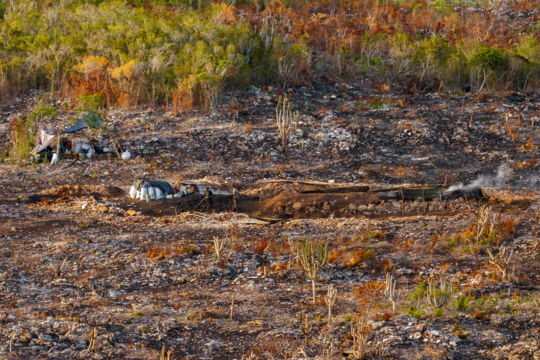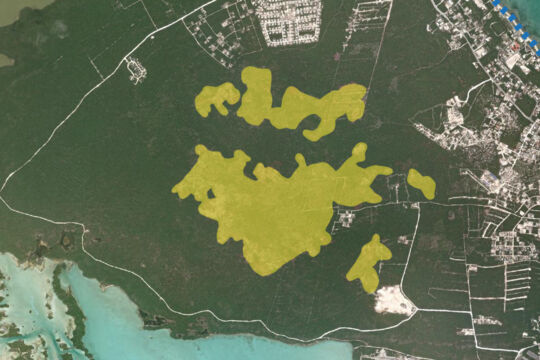Providenciales, Turks and Caicos Islands — Swaths of native old-growth forest on Providenciales—the main tourism island in the Turks and Caicos—are being destroyed to produce charcoal, the extent of which can be seen in new photos taken July 24.
The images show scorched clearings where teams are cutting and burning trees, in some cases less than 650 feet (200 m) from vulnerable civilian homes in Blue Hills and outer Wheeland.
Since 2016, roughly 600 acres of the island’s tropical dry forests have been deforested on its remote central western side for charcoal burning, according to Google Earth satellite imagery. The scale of deforestation in this area—which, together with the Frenchman’s Creek Nature Reserve, is the largest area of native old-growth forest left on Providenciales—appears to have increased drastically in the last five years.
The charcoal seems to be used locally as cooking fuel, though some residents believe it is being exported to Haiti.
To date, the Turks and Caicos Government and its various relevant departments do not appear to have taken any meaningful action to prevent the clear-cutting and burning. Clearing land without approval from the Turks and Caicos Islands Government Planning Department is illegal.
The risk of fire from the burn sites spreading uncontrollably to nearby communities grows as more and more land is cleared to cut and burn trees. Several of the surrounding communities have been plagued by destructive fires within the last year. The photos above were taken the same day that a large fire destroyed numerous homes in the community of Blue Hills.
Charcoal burning causes significant and long-lasting environmental damage, especially in small-island states with limited land. As slow-growing hardwood trees produce the best-quality coal, many of the trees being chopped and burned are likely over 100 years old. These include rare hardwood trees, such as the sacred lignum vitae (Guaiacum sanctum), West Indian mahogany (Swietenia mahagoni), Jesuit bark (Exostema caribaeum), and nakedwood (Thouinia discolor). Likely caught in the crossfire are many of the country's rare plants, some of which are only found in the Turks and Caicos.
Providenciales is the most developed and most populated island in the Turks and Caicos archipelago, and it is the center of the country’s tourism industry. Rapid construction and development have led to a host of issues for the island, from frequent flooding to water shortages for residents.
Flooding is anticipated to worsen as the island loses more and more of its natural vegetation, which naturally absorbs excess rainwater, to deforestation. So are soil erosion and habitat loss for its native flora.
